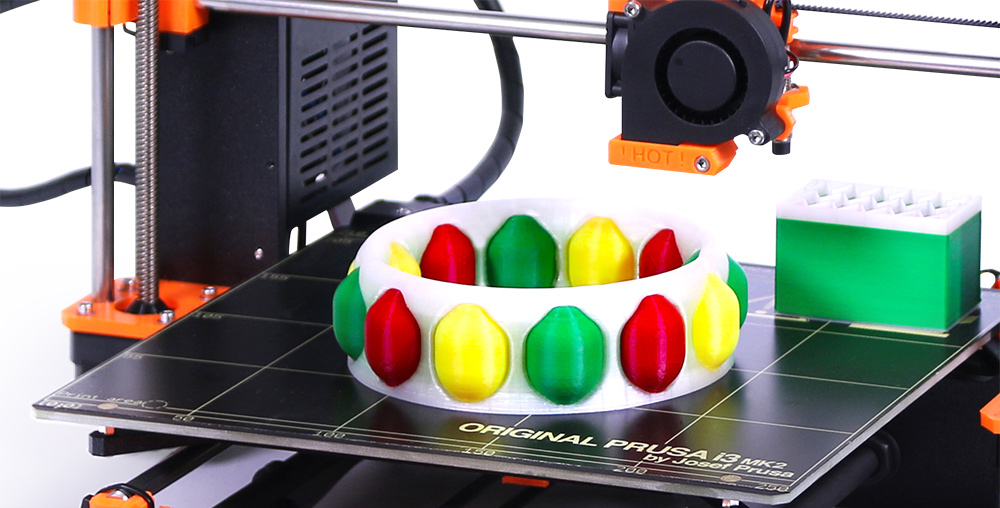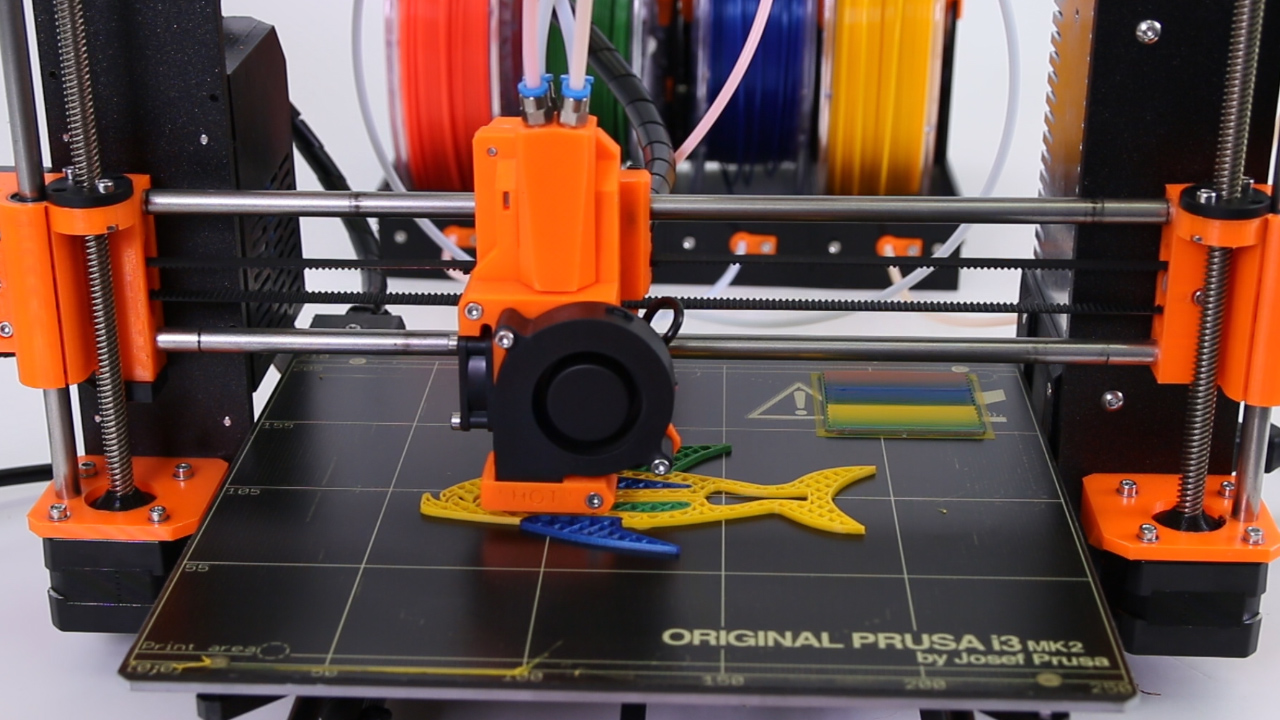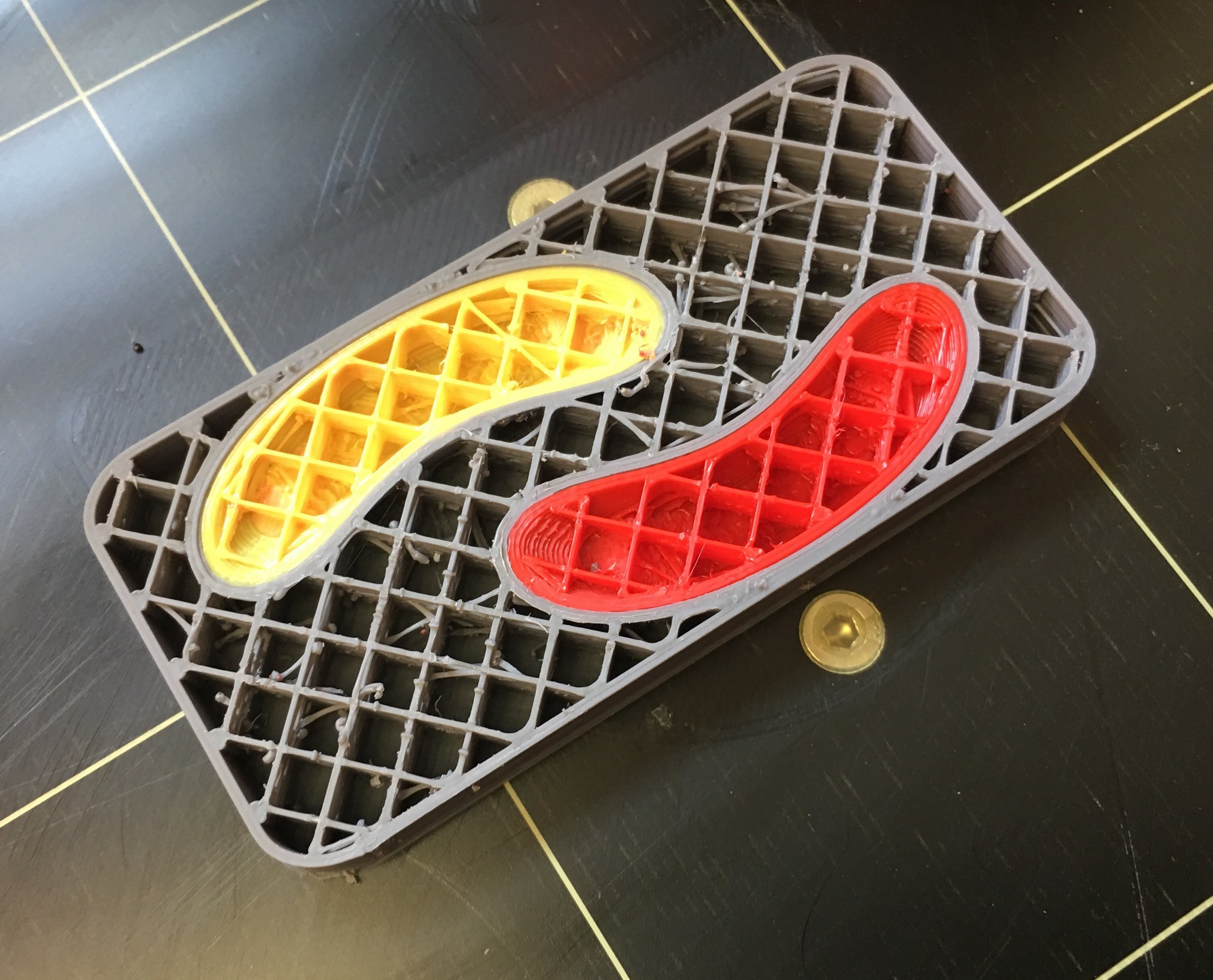
I’ve never been a big fan of dual (or more) nozzle 3D printers because of the problems inherent in the design, but now, perhaps, that style may be heading out with a development from Prusa Research.
Prusa Research, who recently announced a fabulous auto-calibration system, released this week what appears to be a very practical method for including FOUR materials at once in a single nozzle.
The problem with multi-nozzle designs is one of quality, reliability and maintainability. Quality is compromised because multi-nozzle machines literally lose a percentage of build volume as the “other” extruder(s) can’t reach across the axis. Quality is also compromised when the inevitable drips from the “other” extruder pollute the print. Reliability is compromised when stray plastic is encountered by the other extruder and knocks the print off the bed. Maintainability is very challenging because the nozzles must be precisely aligned in three axes.
Multi-Nozzle machines are often not a lot of fun to operate.
But Prusa’s approach is both ingenious and practical. Four extruder motors are mounted at the top in a Bowden-style configuration; each feeds a separate filament towards a single hot end.
But how does this machine handle the collision of filaments? Simple: when a filament switch is to occur, the “active” filament is reversed out to make room for the new filament, which is then pushed into the hot end.

Aha, you ask how the concept handles the mixed extrusion that results from residual plastic in the hot end leftover from the previous filament? The answer is ingenious: the nozzle is moved to a side location where a throw-away extrusion takes place for a moment to “clean” the hot end and purify the extrusion. Then printing the 3D model resumes. This approach works, but does occupy a portion of the build platform. I do wonder why they do this instead of extruding into a waste bucket instead, but the effect is the same: a clean extrusion.

Prints are extremely clean and precise, with no mixing of colors.
This approach has another advantage over dual nozzle machines: you need only keep one nozzle hot, taking less energy. Alternatively, some machines wait for each nozzle to heat up on filament changes, which takes much longer to complete a print. The new Prusa concept has none of these disadvantages.
Prusa’s video shows how this concept works – and also is the best visual representation of dual-nozzle issues I’ve seen:
Now this isn’t the first machine to include this concept: multiple filaments into a single nozzle, but it works. Another recent example of this concept is the RoVa4D from ORD Solutions.
But with these and others making single nozzle configurations work effectively with multiple filaments, could it be that the days of multi-nozzle machines be ending?
Prusa is offering an upgrade at an extremely low cost: USD$199 for a dual extruder version, and only USD$249 for a quad-filament version. However, note this is a “beta” program and not a full production release. But anyone can participate.
Via Prusa Research

